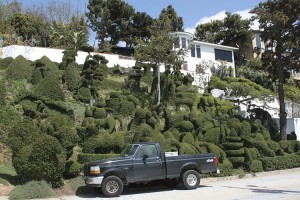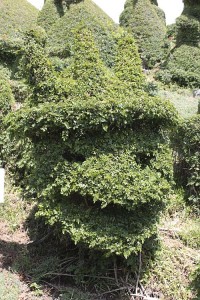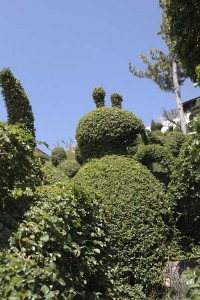
None of us live by gardening alone. Lately I’ve been going back to some of my earlier days, composing music. If you’ll be anywhere near Long Island later in July I invite you to a performance that’ll include one of my new pieces, Afterimages, for clarinet and cello, composed for Thomas Piercy (clarinet) and Suzanne Mueller (cello).
There is a gardening tie to all this: the premiere will take place at the Old Westbury Gardens as part of the Sunday Afternoon Concert Series. The date is July 22, and the concert will commence at 3 p.m.
The New York new music organization Vox Novus invited composers to write something in reaction to this painting, Giverny Revisited, by Raisy Derzie. And, oh yes, the piece had to be sixty seconds long or shorter–talk about a big limitation! They then picked fifteen of the submissions for their ongoing Fifteen Minutes of Fame series of concerts, and my piece will be one of them. In keeping with the idea of the painting, where the artist has taken up the subject matter of Monet’s garden through a modern lens, my piece uses contemporary harmonies and rhythms to riff on the opening of Reflets dan l’eau, the first piece of Claude Debussy’s first set of Images for piano.

Also on the program will be pieces by all sorts of composers from Leopold Mozart, Beethoven, and Bartok to Charlie Chaplin. Cool music, all performed on the very manicured grounds of the old John S. Phipps estate on Long Island in New York.
I had another short short work selected for another of Vox Novus’ concerts, this one featuring the West Point Wind Quintet in a concert designed to commemorate the 150th anniversary of the Civil War. I was feeling a little contrary, so not only did they get a piece less than a minute long, the piece was a three-movement suite, all of which clocked in at about 54 seconds. It’s all a little square and academic but it was fun to write.
The piece: Field Notes: Three Volleys for Wind Quintet
The movements (linked to the YouTube performance):
[ Program notes to the whole concert, including videos of the concert, in two parts ]
The entire world premiere performance on April 29, 2012:
Enjoy!







